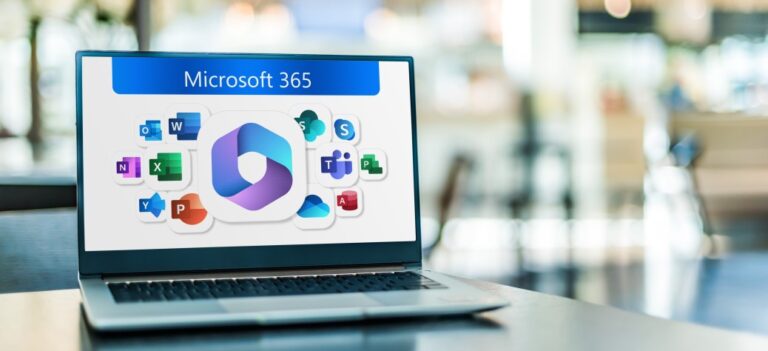Microsoft Teams is a powerful online collaboration platform that empowers team members to work together productively. It has become a staple with a remote and distributed workforce, thus enabling organizations to function seamlessly while also allowing them to remain agile enough to fulfill their respective business goals.
The platform is a part of the Office 365 suite that runs on Mac, Linux, Windows, iOS, and Android and enables easy remote communication virtually across desktop and mobile devices.
Although a robust tool for supporting cross-functional team collaboration, the openness of Microsoft Teams introduces several security concerns about data sharing between an unlimited number of users. Among these include information leaks, guest access, privacy concerns, sharing highly sensitive information, phishing attacks, and more.
To navigate this better, this guide will help you understand the MS Teams security concerns along with best practices to improve the associated security risks. This, in turn, will allow you to collaborate effectively while also minimizing the risk involved in the process.
How To Ensure Microsoft Teams Security-Best Practices
There are several ways to enhance Microsoft Teams’ security and compliance and minimize the risks that come with it. Here are some ways to improve Microsoft Teams’ security in the long run.
Configure Data Security Features
Office 365 offers several additional features to secure your data. Some of them that you can use are-
Set up Data Loss Prevention
Setting up data loss prevention or DLP in MS Teams helps you prevent the instances where your critical information is exposed to the wrong people accidentally. This will help you reduce the risk of data loss or breaches significantly.
The best way to do this is to set up DLP controls based on sensitivity labels, which can instantly block unauthorized or malicious users from sharing or accessing data in Teams.
Proper DLP policies in place also help you navigate user behavior within Teams and determine if these policies yield expected results or if you need to alter them.
Sensitivity Labels for Protecting Information
In a remote working environment, employees need to collaborate both internally and externally. This poses several potential data security risks, as any sensitive information or confidential document can accidentally go to people with the malicious or wrong intent.
Sensitivity labels are a Teams feature that lets you deal with this by classifying and safeguarding your company’s confidential data while also making sure that users can collaborate and remain productive at the same time.
Sensitivity labels also allow you to encrypt emails and documents, protect content, and mark the content when you use Office 365 apps, followed by applying the label automatically to files and emails.
Set Up App Management
Apps in Microsoft Teams file sharing security typically can be in one of the below categories-
Built-in apps by Microsoft
Custom-built apps
Third-parties built apps
To improve Teams’ security, the best thing to do is restrict the use of selected apps based on their source of origin and the way they manage data and confidential information.
To be able to control which apps you require to block or make available to your organization, you can either go to the settings on the Manage apps page in the Teams admin center or use app permission policies to either block or make selected apps available to specific sets of users.
Know More About Our Microsoft 365 and Consulting Services
Secure Guest Access Settings
One way to improve MS Teams security settings is by using the Guest access settings in the Teams admin center to manage and configure the level of access granted to guest users.
Further, you can also leave guest access disabled by default for maximum security.
The other option you have is to turn on guest access but disable privileges such as screen sharing or peer-to-peer calls.
Create Activity Alerts
Yet another way to boost Microsoft Teams security is by leveraging Office 365 Audit Log. This allows you to monitor any potential security issues. Once you create an activity alert, you will receive an email notification every time users perform specific activities in Office 365.
Further, you may also set activity alerts for external sharing, uploading/downloading files, creating sharing invitations, site permissions modifications, and more. This will allow you to oversee any potential security breaches or risks from user activity.
Should Data Protection Be a Concern in Collaboration Apps Such as Microsoft Teams?
Data today is the key priority for most businesses, yet each year, data breaches are rising exponentially.
When it comes to working with a collaboration tool such as Teams, data integrity and security are one of the top concerns that businesses have. Keeping such security concerns in mind, most Microsoft Teams users also worry about the security features of collaboration tools for a valid reason.
Some of the key questions that users have in mind concerning the data protection of Microsoft Teams are-
Which features make it more or less secure compared to competitors in the market (Workplace from Facebook or Slack)?
How well do these Microsoft Teams features follow security best practices?
Are there any measures in place in case there are security breaches?
Microsoft Teams Security with Authentication and Encryption
Microsoft teams also have a range of different authentication protocols in place, which makes it difficult for unauthorized or malicious users to gain access.
Among these include the following-
Two-factor authentication
Single-sign-on through Active Directory
Encryption
Another highlight of Microsoft Teams’ security is that it encrypts user data in transit and at rest. While the same encryption is offered by other platforms like Slack as well, the main difference between the two is in the way this process is controlled.
Unlike Slack which handles the encryption process itself, Microsoft Teams make use of Active Directory to manage many of these functions, thus offering IT teams better control over their security.
Further, certain Office 365 apps, such as OneNote and SharePoint, offer their own encryption protocols.
Manage Microsoft Teams Security Better With TRN Digital
Although a robust tool for collaboration, security for Microsoft Teams is a valid concern.
That means users need to take extra measures to protect Teams data from programmatic/human errors, malicious activity, and other cyber attacks such as phishing and malware.
TRN Digital understands these security complexities that come with Teams and offers various capabilities to prevent and mitigate instances of data breaches/losses.
Contact us to know more.




